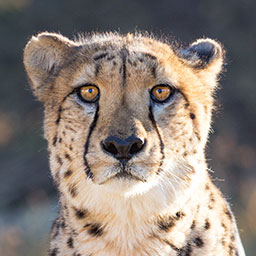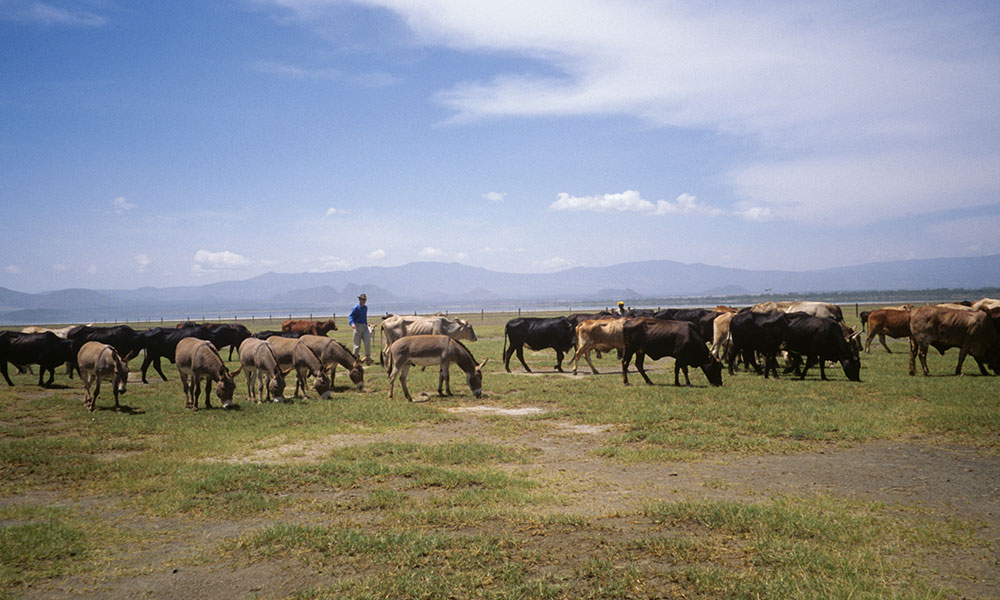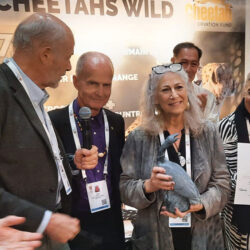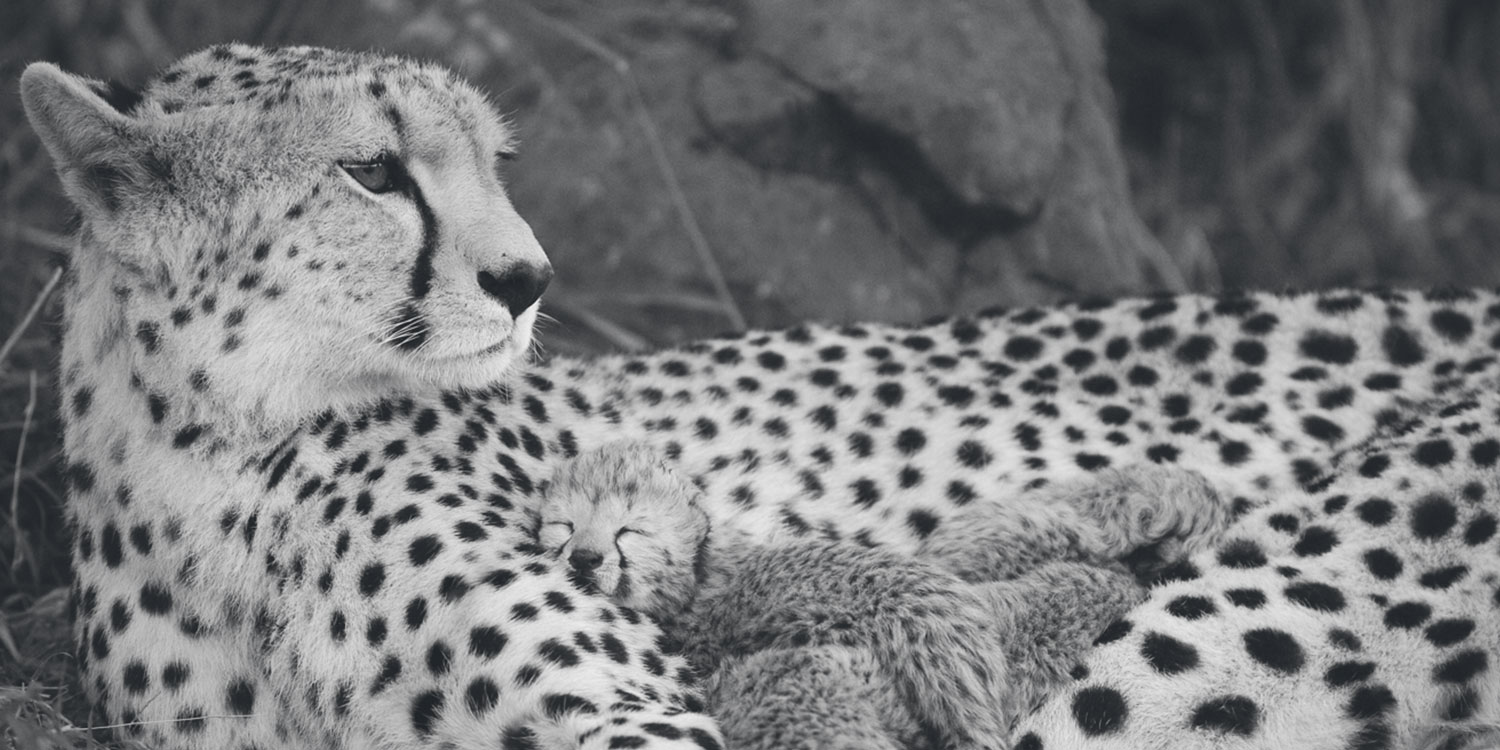Helpful Way To Protect Livestock From Predators During Calving Season
-

- by CCF Staff November 12, 2018
For Immediate Release
WINDHOEK, NAMIBIA (29 November 2018) – As the summer calving season continues in Namibia, the conservation organisations that make up the Large Carnivore Management Association of Namibia (LCMAN) believes this is also the time to employ extra precautionary measures to protect calves from predators such as leopard, cheetah, brown & spotted hyena, African wild dogs, caracal, and jackal. For more than two decades, the LCMAN members and associates have been working with local farmers to reduce conflict with predators. Livestock losses can be reduced by incorporating simple management techniques into farming practices.
To better navigate the calving season and reduce livestock loss, the following tips and advice are being shared with the farming community. Studies indicate predator problems are greatly reduced when appropriate management techniques are employed.
- Keep cows and calves closer to the homestead for up to one month after birth. If this is problematic due to limited grazing, try keeping staff based near the camps, no matter how far away they are during calving season.
- Mix in a few cows or oxen with horns to the calving herds. This is helpful because these animals instinctively know how to use their horns against predators.
- Observe heifers more closely by bringing them nearer to the homestead during calving time, so assistance can be given if birthing is difficult. Often high losses occur in heifer herds during the beginning of calving season. Often heifers experience birthing problems, which can result in weak calves that are easy prey for a predator.
- Mix in a few older, experienced cows with the heifer herd, as the older cows will protect the calves and teach the heifers how to defend their young. Calves might be more vulnerable to attack when heifers are inexperienced at protecting their offspring from predators.
- Cull cows that repeatedly lose calves to predators. Often it is the same cow that loses its calves. Good record keeping is critical for this reason.
- Use other animals for protectors, like donkeys. Donkeys will chase away dogs, jackals, leopard and cheetahs. This works best if the donkey has bonded to a herd, and also if it gives birth a couple weeks before the cattle, so they will be fiercely protective of the herd.
- Keep high concentrations of cattle in camps, and rotate them through camps rapidly to help reduce losses. This system mimics the natural cycle of large migrating herds of game species (i.e. wildebeest) and brings together high numbers of cows with calves. This multiplies the natural protective instincts of the mothers for the benefit of all the calves. There is strength in numbers!
- Use breeds of cattle that are more aggressive towards predators like Brahman, Afrikaner, Nguni, or a cross with one of them.
- Keep calving cows out of camps with high densities of aardvark holes, as calves are known to fall into these holes and become injured or die. Also, keep calves away from thick bush for the same reason. Predators often take the blame for these types of losses.
- Maintain a healthy prey population in areas where livestock graze. Livestock losses to predators are higher where natural prey is scarce. >/li>
Loss of small stock due to predators can also be reduced. Farmers that employ herders to protect small stock – sheep and goats – have fewer problems. Kraaling herds at night with fences that are non-porous and high enough to deny predators access the kraal, and lighting the kraal, and locating the kraal near the house have all proven to reduce losses. Lambing camps can help protect newborn lambs in the same way.
In addition, LCMAN promotes the use of Livestock Guarding Dogs — both specialised (Kangal and Anatolian Shepherds) and local breeds — trained to guard and protect small stock. Research by Cheetah Conservation Fund (CCF) indicates farmers employing Kangal or Anatolian Shepherd Livestock Guarding Dogs have reduced their livestock losses by up to 80-percent. Guarding dogs protect flocks; they do not herd them. The dogs patrol the area where small stock animals are grazing and bark loudly when a predator is detected. Generally, the bark is enough to dissuade most predators, but if engaged, a dog will fight to protect his herd.
Predators move in and out of game farms often through warthog holes. LCMAN recommends maintaining fences and keeping holes closed to keep predators out. It is also important to maintain a sustainable wild prey population on the freehold and communal farmlands, as predators prefer to hunt wild game over livestock. During the rainy season, predators also follow the wildlife to where the grass is greener, or where the first rains occur. Predators usually select the weaker, young, slower or older wild game, they help maintain a healthy wildlife population by doing so. Predators feed in the veld and other carnivores will also feed off another predators’ kill, thus reducing the need for other predators to prey on domestic animals.
The removal of territorial and apex predators causes a vacuum effect. When a territory becomes vacant, younger animals of the same species or other predators are attracted to fill the void in the territory that has opened up (either because of a killing by humans or territorial fights with conspecific predators). Often, young and inexperienced predators are more likely to target small stock.
Safety in Setting Trap Cages
When livestock losses are experienced, some farmers use cage traps to try and remove the offending individual predator. When setting a trap, it is important to take the following precautions.
- Place the trap in a location where it will be shaded the whole day. On hot days, animals that are caught in traps that are not shaded could die of heat exhaustion.
- They also need water. Check the traps at least once a day to minimize the suffering of the trapped individual (i.e. – checking shade, making sure water and food are provided).
- Make some provision for the release of non-target animals. In some cases, the non-target animals are dangerous to release – animals like baboons and honey badgers — and will attack if cornered. Thus, make a plan for release from a vehicle at a safe distance.
- It’s against the law to keep trapped cheetahs or other carnivores in the cage for more than a couple days. Ministry of Environment and Tourism (MET) has strict laws as to large carnivores.
Remember that members of the Large Carnivore Management Association (LCMAN) are available to give information and provide help.
A 24-hour Farmer Carnivore Help Hotline is available. If you are experiencing predator problems or trap a predator on your land, please call +264 81 227 5139.


About LCMAN
The Large Carnivore Association of Namibia (LCMAN) was formed in 2001 bringing together the stakeholders of Large Carnivores, including conservationists and researchers, farmers, hunters and the Ministry of Environment and Tourism. LCMAN’s objectives include:
- Establishing management strategies to mitigate human wildlife conflict;
- Increasing communal farmer participation (both conservancy and non-conservancy) in LCMAN;
- Gathering information and disseminating it with respect to all aspects of large carnivores, in particular HWC mitigation;
- Setting up and carrying out a national census on priority species;
- Assisting with and promoting national management plans and strategies for priority species;
- Assisting with the HWC situation in targeted priority and high conflict areas; and
- Working with the captive large carnivore sector as appropriate, including providing assistance to MET with registration of captive carnivores and the setting and monitoring of standards.
MEDIA CONTACT:
Faith Chambara, [email protected]
Dr. Laurie Marker, [email protected], OR (0) 811247887
Nadja le Roux, [email protected], National HWC Farmer Hotline +264 81 277 5139
Related Reading


